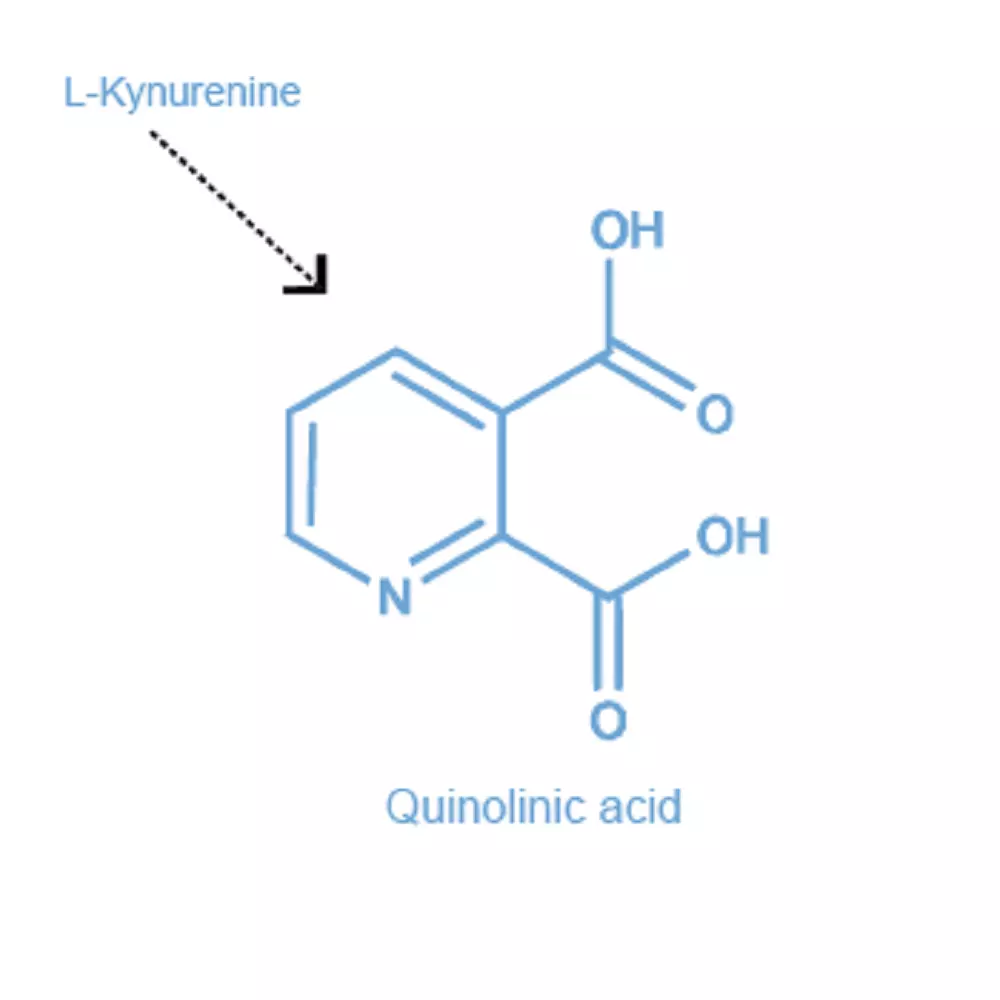Quinolinic acid Antibody – Rabbit Polyclonal
Ref: IS1010
Kynurenine pathwayTryptophan metabolismToxinsPolyclonal AntibodiesICCIFIHC
 +
+Quinolinic acid detection in human parkinson's brain
Immunohistochemistry (IHC) reveals the presence of Quinolinic acid in glial cells in human parkinsonian midbrain tissue. Paraffin-embedded tissue section was subjected to pH=9 antigen retrieval followed by overnight incubation with primary anti-quinolinic acid polyclonal antibody (dilution 1/1000). After incubation with polymer-conjugated secondary Ab, DAB was used to visualize the staining.
DatasheetMSDS
Validated for IHC in human brain tissues, this anti-Quinolinic acid (QUIN) rabbit polyclonal antibody proved to work at 1/1000 dilution on paraffin-embedded sections, a single vial thus catering for approximately 200 stainings.
| Clonality | Polyclonal antibody |
| Host | Rabbit |
| Valided applications | IHC |
| Reactivity | Reacts with all species |
| References | Not yet cited to our knowledge Submit content and get a 10% discount! |
| Format | 50µl |
| References | Cited in 1 paper |
| Size | 50µg |
|---|
440.00€
90 in stock
Worldwide shipping
Product overview
| Product name | Quinolinic acid polyclonal antibody |
| Synonyms | Pyridine-2,3-dicarboxylic acid polyclonal antibody
Anti-quinolinate polyclonal antibody Anti-QUIN polyclonal antibody |
| Immunogen | Conjugated quinolinic acid |
| Specificity | When tested in competitive ELISA, the anti-Quinolinic acid polyclonal antibody did not show any significant cross reactivity with Picolinic and anthranilic acids conjugates |
Storage
| Form | Liquid |
| Purity | Purified anti-serum |
| Storage | Store at +4°C for short term (1-2 months). Aliquot and store at -20°C for long term. Avoid repeated freeze / thaw cycles |
| Material safety datasheet | Download MSDS |
| Immunohistochemistry (IHC) | Dilute at 1:200-1:2000. Perform heat antigen retrieval (pH=9) before initiating IHC staining protocol on paraffin-embedded and frozen sections |
| Comments | Optimal working dilutions must be determined by the end-user |
| Restrictions | For research use only |
Product citation
- Indoleamine 2,3-dioxygenase (IDO)-1 and IDO-2 activity and severe course of COVID-19
Check the article
Authors : Guo et al., Journal of Pathology
2022-01





